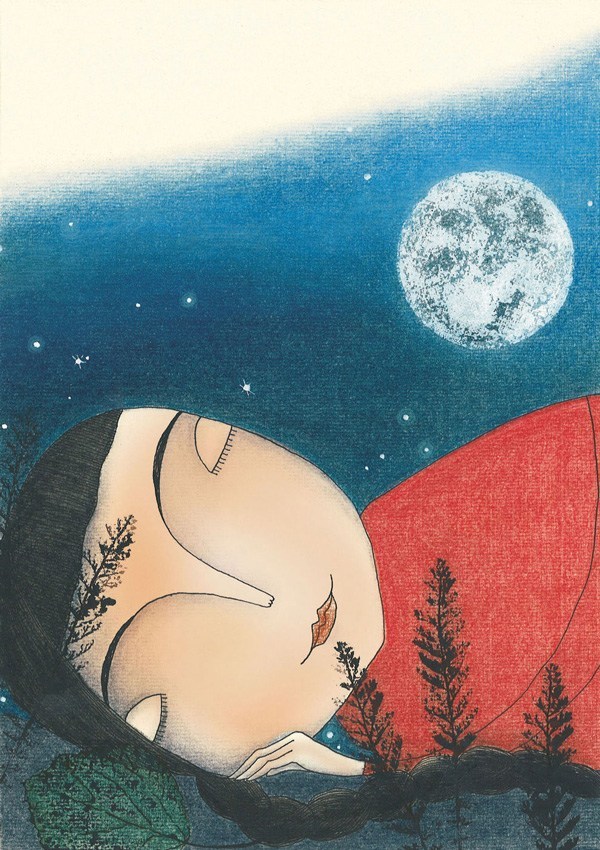A lyrical time-capsule of human history being made under the unblinking eye of cosmic time.
By Maria Popova
In one of her love letters, Margaret Fuller — who laid the foundation of American feminism, advocated for black voting rights generations before women won the vote, and believed in every fiber of her being that genius is “common as light” when given the chance — wrote of “that best fact, the Moon.” A century, a Civil War, and two World Wars after her, amid the golden age of space exploration, the great Italian scientist, humanist, and Holocaust survivor Primo Levi considered the spiritual value of our cosmic dreams in his gorgeous essay “The Moon and Man,” insisting that “for good or evil, we are a single people: the more we become conscious of this, the less difficult and long will be humanity’s progress toward justice and peace.”
Marilyn Nelson shines a sidewise gleam on that best, most unifying fact in her stunning poem “The Children’ Moon,” written in the voice of her own mother — one of the first black women to teach at an all-white elementary school, spearheading a classroom of twenty white second-graders at an Air Force base school in Kansas four months after Brown v. Board of Education.
 Illustration by Judith Clay from Thea’s Tree
Illustration by Judith Clay from Thea’s Tree
Performed at the On Being gathering in 2018 and published a year earlier in Mrs. Nelson’s Class (public library) — the conceptually brilliant anthology Nelson edited, featuring persona poems by twenty different poets, each taking on the voice of one of the bodies in her mother’s classroom to imagine what the experience of making history together might have been like — the poem is a stunning reminder that the human capacity for wonder at the grandeur of the universe and the natural world, a capacity “common as light” among us all, will always eclipse the capacity for diminishment and divisiveness along artificial lines, lines drawn not by the reality of nature but by the selectively consensual non-reality we call culture, lines that constrict and confine and desecrate what is best and largest in our nature.
THE CHILDREN’S MOON
by Marilyn NelsonIn my navy shirtwaist dress and three-inch heels,
my pearl clip-ons and newly red-rinsed curls,
I smoothed on lipstick, lipstick-marked my girls,
saluted and held thumbs-up to my darling Mel,
and drove myself to school for the first day.Over the schoolyard a silver lozenge
dissolved into the morning’s blue cauldron.
Enter twenty seven-year-old white children.
Look, children, I said as they found their desks:
The children’s moon! A special good luck sign!We pledged allegiance, and silently prayed.
George Washington watched sternly from his frame.
I turned to the blackboard and wrote my name.
I thought I heard, She’s the REAL teacher’s maid!
I thought I heard echoes of history.But when I turned, every child in the room
had one hand up, asking, What is the children’s moon?
Complement with Nelson’s entrancing performance of her existential-scientific poem “Faster than Light” at the third annual Universe in Verse and savor her On Being conversation with Krista Tippett (who also read an existential-mathematical poem in the same show), then revisit other titanic poets of our time performing their own work: Marie Howe reading “Singularity,” Ross Gay reading “Ode to Buttoning and Unbuttoning My Shirt,” Elizabeth Alexander reading “The Venus Hottentot,” U.S. Poet Laureate Tracy K. Smith reading from “My God, It’s Full of Stars,” and Jane Hirshfield reading “Today, Another Universe.”






